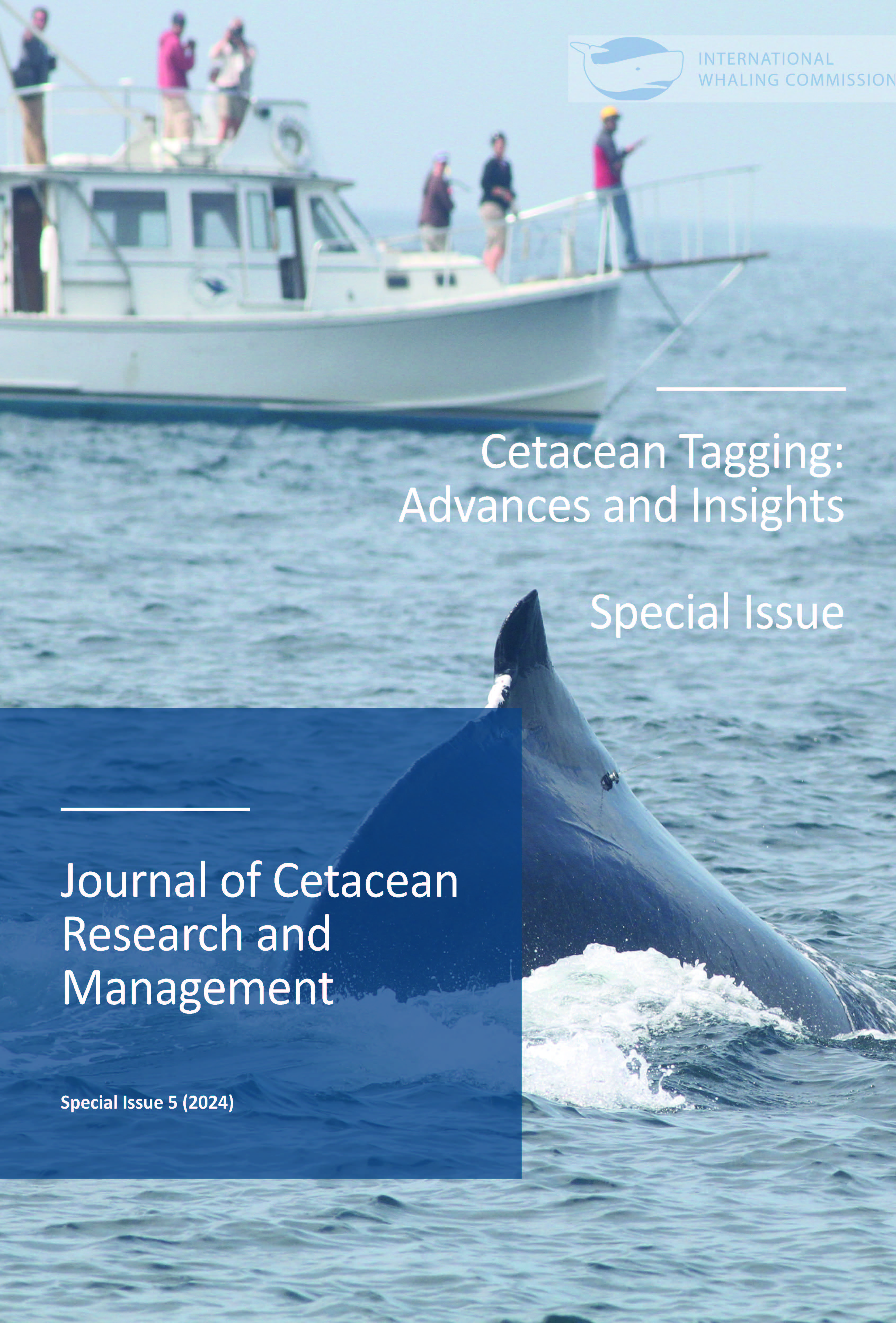Remote assessment of ‘Type C’ implantable satellite tag extrusion using light sensors
Main Article Content
Abstract
Advances in engineering and long‐term monitoring projects have greatly increased the sophistication of cetacean biologging methods and technology. While implantable cetacean tags naturally extrude and eventually fall off, satellite tag duration for large whales is still highly variable and often below expected longevity based on battery life alone. Causes of tag failure are difficult to determine and may include natural extrusion of the device, transmitter failure during deployment, or post‐deployment damage. Tags deployed during a study designed to assess tag performance and impacts in humpback whales (Megaptera novaeangliae) in the Gulf of Maine between 2011 and 2015 were equipped with a sensor designed to detect light exposure. Light sensor readings were evaluated based on follow‐up photos of 30 whales in order to investigate whether recorded light levels could serve as a remote indicator of tag extrusion distance. There was a direct correlation between the amount of extrusion and daytime light levels; fully embedded tags recorded no light, while tags that had extruded enough to fully expose the light sensor recorded full light levels. Partially extruded tags recorded variable light levels throughout daylight hours, likely due to irregular or partial exposure of the light sensor. While the single‐sensor design cannot describe the fine‐scale rate of tag extrusion, additional light sensors placed along the length of the tag and a visible indicator of sensor orientation would greatly improve remote diagnostics. These results show that light levels may be used as an indicator of extrusion and highlight their potential value for understanding tag performance.
Article Details

This work is licensed under a Creative Commons Attribution-NonCommercial 4.0 International License.
You are free to:
- Share copy and redistribute the material in any medium or format
- Adapt remix, transform, and build upon the material
- The licensor cannot revoke these freedoms as long as you follow the license terms.
Under the following terms:
- Attribution You must give appropriate credit, provide a link to the license, and indicate if changes were made. You may do so in any reasonable manner, but not in any way that suggests the licensor endorses you or your use.
- NonCommercial You may not use the material for commercial purposes.
- No additional restrictions You may not apply legal terms or technological measures that legally restrict others from doing anything the license permits.

